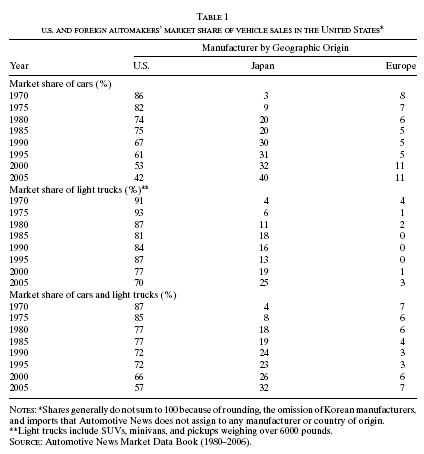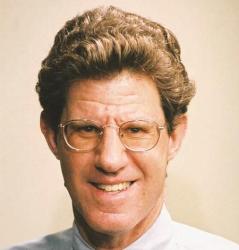INTRODUCTION
Until the energy shocks of the 1970s opened the U.S. market to foreign automak- ers by spurring consumer interest in small fuel-efficient cars, General Motors, Ford, and Chrysler sold nearly 9 out of every 10 new vehicles on the American road. After gaining a toehold in the U.S. market, Japanese automakers, in particular, have taken significant share from what was once justifiably called the Big Three (Table 1). Today, about 40% of the nation’s new cars and 70% of its light trucks are sold by U.S. producers. And new competitive pressures portend additional losses in share, especially in the light truck market—a traditional stronghold for U.S. firms partly because of a 25% tariff on light trucks built outside of North America and the historical absence of European automakers from this market. Japanese automakers are building light trucks in the United States to avoid the tar- iff and introducing new minivans, SUVs, and pickups, and European automakers are starting to offer SUVs.




